Ngược dòng thời gian: Nhìn lại những chiếc điện thoại đã làm nên tên tuổi của Motorola
gsmarena
2004 is when Motorola peaked - the RAZR V3 was introduced and it became one of the best-selling phones in history. The V3 itself was around for four years and sold a stunning 130 million units. Later RAZRs weren't quite as successful, but were still popular. Moto cut prices in order to sell millions of units, but that slashed the margins, which ended up hurting the company. Still, flip phones ruled and it was all because of the RAZR.
That same year, the Motorola E398 launched. It could play MP3 files through its 22KHz stereo speakers (or through headphones, of course). A year later the hardware was reworked into the ROKR E1, in some ways it was Apple's first phone.
You could connect it to your iTunes music library and load 100 songs (but no more). That's even though it supported microSD cards up to 1GB (it came bundled with a 512MB card). 1GB > 100 MP3s, but not according to Apple math. Regardless, the Apple-Motorola collaboration quickly turned sour as Cupertino unveiled the iPod nano on the same day that Moto showed the ROKR.
The MOTOFONE F3 was an odd one. It had an e-paper display and while it couldn't render a graphical interface, it was unmatched when it came to legibility under a bright sun. And battery life was out of this world. It was a phone built for calling, however. Texting was possible but clunky as the display could only show two lines of six characters.
In 2007, Rod Baber climbed Everest, pulled out his RIZR Z8 and made a call. Remember that the next time your 4G LTE MIMO phone has no bars. A year before that, Moto built a charitable (RED) edition of the SLVR L7, several years before Apple jumped on that particular ship.
The RAZR may have been Moto's peak, but the Droid defined its later years. The lineup also played a major role in the early development of Android.
Back in 2009 the Apple iPhone was still exclusive to AT&T and Verizon needed an answer. It found it in the Motorola Droid known internationally as the Milestone. The carrier ran an extensive marketing campaign that hammered the iPhone for its lack of multitasking among other things.
The phone also took a swing at Nokia as it had exclusive (in the US) Google Maps Navigator - you may have forgotten, but that was a separate app back then. Soon after Nokia made voice-guided navigation free for all its Symbian phones. The Droid also featured an Amazon MP3 Store app (a belated strike back against iTunes).
The Motorola ATRIX has the distinction of being one of the first Androids with a fingerprint reader. And it had another feature that recently became popular - by using a media dock, it could connect to an external monitor and keyboard to run Ubuntu-based software. With the Lapdock it could turn into a laptop instead, complete with a full Firefox implementation. It was Continuum / DeX / PC mode years before others thought of it.
Not long after the ATRIX was released, Google acquired the struggling phone division of Motorola. As chief Android developer, the search giant didn't want to appear like it competes directly with Android makers so Motorola gave up pursuit of the wide-margin flagship business.
It's not all bad, this period saw fan-favorites like the Moto G and Moto E. Google imbued them with near Nexus levels of clean software (save for Active display, an awesome early attempt at an always on screen, that was all Motorola). With colorful panels, affordable cost and capable hardware, these gained a lot of word-of-mouth popularity.
The Moto X was a touch underpowered for a flagship, but its claim to fame was that it was "Made in the US", which allowed the company to quickly ship custom made phones to consumers... but only in the US. With Motomaker you could mix and match the colors and material on the phone's exterior like a pair of expensive custom-made sneakers. The service slowly went global, but it was too late by then.
Motorola also made the Nexus 6, a more premium offering than the previous two Nexus phones (by LG). It was large (5.96" screen), water resistant, had wireless charging - three things that Google will abandon with the next two Nexus phones (5X and 6P) and the first round of Pixel phones. The Pixel 2 XL has a 6" screen, though due to a taller aspect ratio the screen is still smaller than the one on the Nexus 6.
The company was also an early mover in the Android Wear market with the Moto 360, which is still remembered for its flat tire display (years after the Aura and its actually circular display). Wearables didn't bring in much cash so enthusiasm for 360 watches quickly faded.
The final phone we want to touch on is the Moto Z. It tried to spice things up with an add-on system (which is also supported on some of the newer mid-rangers). Motorola launches a new module every now and then, but as LG learned with the G5, add-ons aren't an easy sell.
Motorola phones are currently in Lenovo's stable and the company occasionally flip-flops on whether it wants go all-in on the brand recognition of Motorola or develop its own name. Currently, both Motorola and Lenovo phones are made with the latter confined to China.
Phew, this was a long article and we still feel like we missed so much. We skipped over some interesting phones certainly, but our walk down memory lane left us convinced that three phones define Motorola.
The DynaTAC, of course, it was the Alexander Graham Bell moment of mobile phones. The RAZR V3 skyrocketed Moto's profits and popularity. The Droid helped a fledgling Android establish itself. Although no longer independent, the company is still around and we hope to see a fourth phone join the list.
Counterclockwise: revisiting Motorola's iconic phones
Motorola is famous for making the first commercial cell phone - the DynaTAC. It also created the first ever flip phone, the Motorola StarTAC.
The company has scored many more firsts in its 90 years of existence,
enjoyed a golden age when it shaped the mobile phone market and
eventually fell on hard times.
The Timeport P7389
was the first phone with GPRS - that's the first modern mobile Internet
standard (CSD was more akin to dial-up). The phone first connected to
the net over the BT Cellnet in the UK, which was running hardware also
built by Motorola (and Cisco).
2002 also saw some exciting firsts. The Motorola E360 was the company's first phone with a color screen - a CSTN panel that could display 4,096 colors. The Motorola V70 had the appearance (though not the actual hardware) of a round screen. Later the company would launch the premium Motorola Aura
with an actual round display - an early example of a non-rectangular
screen. Still, the $2,000+ price meant that basically no one bought that
one.2004 is when Motorola peaked - the RAZR V3 was introduced and it became one of the best-selling phones in history. The V3 itself was around for four years and sold a stunning 130 million units. Later RAZRs weren't quite as successful, but were still popular. Moto cut prices in order to sell millions of units, but that slashed the margins, which ended up hurting the company. Still, flip phones ruled and it was all because of the RAZR.
That same year, the Motorola E398 launched. It could play MP3 files through its 22KHz stereo speakers (or through headphones, of course). A year later the hardware was reworked into the ROKR E1, in some ways it was Apple's first phone.
You could connect it to your iTunes music library and load 100 songs (but no more). That's even though it supported microSD cards up to 1GB (it came bundled with a 512MB card). 1GB > 100 MP3s, but not according to Apple math. Regardless, the Apple-Motorola collaboration quickly turned sour as Cupertino unveiled the iPod nano on the same day that Moto showed the ROKR.
The MOTOFONE F3 was an odd one. It had an e-paper display and while it couldn't render a graphical interface, it was unmatched when it came to legibility under a bright sun. And battery life was out of this world. It was a phone built for calling, however. Texting was possible but clunky as the display could only show two lines of six characters.
In 2007, Rod Baber climbed Everest, pulled out his RIZR Z8 and made a call. Remember that the next time your 4G LTE MIMO phone has no bars. A year before that, Moto built a charitable (RED) edition of the SLVR L7, several years before Apple jumped on that particular ship.
The RAZR may have been Moto's peak, but the Droid defined its later years. The lineup also played a major role in the early development of Android.
Back in 2009 the Apple iPhone was still exclusive to AT&T and Verizon needed an answer. It found it in the Motorola Droid known internationally as the Milestone. The carrier ran an extensive marketing campaign that hammered the iPhone for its lack of multitasking among other things.
The phone also took a swing at Nokia as it had exclusive (in the US) Google Maps Navigator - you may have forgotten, but that was a separate app back then. Soon after Nokia made voice-guided navigation free for all its Symbian phones. The Droid also featured an Amazon MP3 Store app (a belated strike back against iTunes).
The Motorola ATRIX has the distinction of being one of the first Androids with a fingerprint reader. And it had another feature that recently became popular - by using a media dock, it could connect to an external monitor and keyboard to run Ubuntu-based software. With the Lapdock it could turn into a laptop instead, complete with a full Firefox implementation. It was Continuum / DeX / PC mode years before others thought of it.
Not long after the ATRIX was released, Google acquired the struggling phone division of Motorola. As chief Android developer, the search giant didn't want to appear like it competes directly with Android makers so Motorola gave up pursuit of the wide-margin flagship business.
It's not all bad, this period saw fan-favorites like the Moto G and Moto E. Google imbued them with near Nexus levels of clean software (save for Active display, an awesome early attempt at an always on screen, that was all Motorola). With colorful panels, affordable cost and capable hardware, these gained a lot of word-of-mouth popularity.
The Moto X was a touch underpowered for a flagship, but its claim to fame was that it was "Made in the US", which allowed the company to quickly ship custom made phones to consumers... but only in the US. With Motomaker you could mix and match the colors and material on the phone's exterior like a pair of expensive custom-made sneakers. The service slowly went global, but it was too late by then.
Motorola also made the Nexus 6, a more premium offering than the previous two Nexus phones (by LG). It was large (5.96" screen), water resistant, had wireless charging - three things that Google will abandon with the next two Nexus phones (5X and 6P) and the first round of Pixel phones. The Pixel 2 XL has a 6" screen, though due to a taller aspect ratio the screen is still smaller than the one on the Nexus 6.
The company was also an early mover in the Android Wear market with the Moto 360, which is still remembered for its flat tire display (years after the Aura and its actually circular display). Wearables didn't bring in much cash so enthusiasm for 360 watches quickly faded.
The final phone we want to touch on is the Moto Z. It tried to spice things up with an add-on system (which is also supported on some of the newer mid-rangers). Motorola launches a new module every now and then, but as LG learned with the G5, add-ons aren't an easy sell.
Motorola phones are currently in Lenovo's stable and the company occasionally flip-flops on whether it wants go all-in on the brand recognition of Motorola or develop its own name. Currently, both Motorola and Lenovo phones are made with the latter confined to China.
Phew, this was a long article and we still feel like we missed so much. We skipped over some interesting phones certainly, but our walk down memory lane left us convinced that three phones define Motorola.
The DynaTAC, of course, it was the Alexander Graham Bell moment of mobile phones. The RAZR V3 skyrocketed Moto's profits and popularity. The Droid helped a fledgling Android establish itself. Although no longer independent, the company is still around and we hope to see a fourth phone join the list.
Motorola là thương hiệu điện thoại nổi tiếng một thời không hề kém cạnh
Nokia. Họ được biết đến là thương hiệu đầu tiên thương mại hoá điện
thoại di động và sau đó là Motorola StarTAC, chiếc flip phone đầu tiên
trên thế giới. Không chỉ vậy, tên tuổi của Motorola còn được tạo nên bởi
rất nhiều thiết bị sáng tạo. Cùng ngược dòng thời gian để
xem những sản phẩm nào đã tạo nên danh tiếng cho Motorola:
Đầu tiên đó chính là chiếc điện thoại được nhắc đến ở trên: StarTAC, chiếc flip phone đầu tiên. Bên cạnh đó, Motorola cũng ra mắt thiết bị có hỗ trợ GPRS đầu tiên, máy có tên là Timeport P7389.
Đầu tiên đó chính là chiếc điện thoại được nhắc đến ở trên: StarTAC, chiếc flip phone đầu tiên. Bên cạnh đó, Motorola cũng ra mắt thiết bị có hỗ trợ GPRS đầu tiên, máy có tên là Timeport P7389.
Đến năm 2002, hãng giới thiệu chiếc E360, chiếc điện thoại màn hình màu
đầu tiên của Motorola. Theo đó, tấm nền được Motorola sử dụng là tấm
nền CSTN có khả năng hiển thị 4096 màu sắc. Sau E360 là chiếc V70 với
một màn hình "giả tròn". Đến năm 2008 Motorola mới đưa ra một phiên bản
cao cấp khác có màn hình tròn thật sự là chiếc Motorola Aura. Tuy nhiên,
nó cao cấp đến nỗi không ai có thể mua khi mức giá lên đến 2000USD.
Năm thành công nhất của Motorola chính là năm 2004 với chiếc RAZR V3.
Đây chính là thiết bị thành công nhất của hãng với doanh số bán hàng lớn
kỷ lục lên đến 130 triệu thiết bị. Dù vậy các thế hệ sau của mẫu RAZR
này lại không quá thành công như người "anh" của mình, công ty đã phải
giảm giá bán để có thể tăng số lượng máy bán ra.
Cũng trong năm 2004, Motorola E398 được ra mắt với khả năng chơi nhạc
MP3 thông qua loa stereo với tần số 22KHz. Đến năm 2005, chiếc ROKR E1
được ra mắt tuy đây là thế hệ mới nhưng nó vẫn mang phần cứng của E398.
Về khía cạnh nào đó, đây được coi là chiếc điện thoại đầu tiên của Apple
vì được chính Steve Jobs giới thiệu. ROKR E1 có khả năng kết nối với
thư viện nhạc iTunes và tải được tối đa 100 bài hát. Đây cũng chính là
nền tảng để Apple hợp tác với Motorola tạo ra chiếc iPod Nnano.
Motofone F3 là một thiết bị khá đặc biệt với một màn hình e-paper tuy
nhiên nó lại không thể hiển thị hình ảnh phức tạp. Đây là một chiếc điện
thoại được tạo ra để phục vụ các tác vụ cơ bản như nghe gọi. Khả năng
hiển thị cũng khá kém khi chỉ có thể hiện thị hai dòng 6 ký tự. Ngoài
ra, thương hiệu này còn có chiếc RIZR 8 đặc biệt không kém khi đã đi
cùng với Rod Baber đi chinh phục đỉnh Everest và chiếc SLVR L7 RED
edition với mục đích từ thiện, như vậy Motorola đã có phiên bản "RED"
nhiều năm trước Apple.
Sau RAZR, chiếc Droid hay còn được biết đến với tên gọi Milestone cũng
là một sản phẩm đỉnh cao của Motorola. Thiết bị này góp công rất lớn
trong công cuộc phát triển hệ điều hành Android lúc đó. Bên cạnh
Milestone, chiếc Atrix cũng được phân biệt khi là smartphone đầu tiên có
cảm biến vân tay. Có khả năng kết nối với màn hình và bàn phím bên
ngoài thông qua Lapdock để chạy các phần mềm dựa trên Ubuntu.
Giống với Nokia, Motorola cũng gặp phải giai đoạn suy thoái kể từ lúc
iPhone ra đời. Họ phải bán lại mảng kinh doanh di động của mình cho
Google. Khi đã vào tay Google, những chiếc smartphone Moto G và Moto E
được ra đời với một hệ thống phần mềm sạch sẽ không khác gì những chiếc
Nexus.
Hai sản phẩm nổi bật khác là Moto X và Nexus 6. Tuy nhiên, Moto X vẫn
thiếu khá nhiều để trở thành một chiếc flagship, đối với Nexus 6 được
Motorola trang bị những tính năng rất hiện đại như sạc không dây, màn
hình lớn(5,96inch) và khả năng chống nước.
Không thể phủ nhận sự cố gắng và sáng tạo của Motorola khi họ cũng tham
gia vào thị trường Android Wear với chiếc Moto 360 chiếc Moto Z với khả
năng kết nối với các phụ kiện dạng modun, điểm mà LG đã học tập trên
chiếc G5. Dù vậy sự cố gắng vẫn không giúp đem lại "quả ngọt" khi hai gã
khổng lồ Samsung và Apple đã quá lớn mạnh.
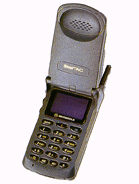

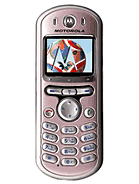
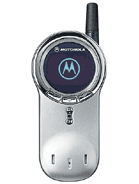
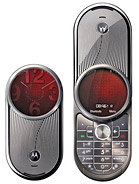
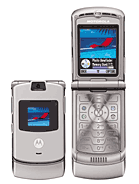
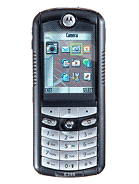

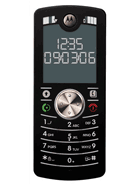
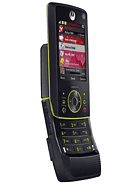
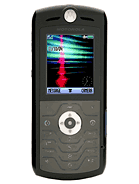
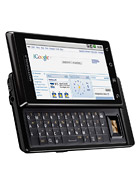
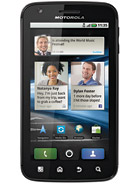
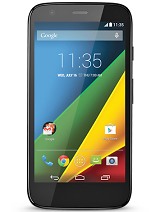
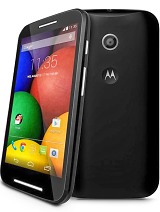

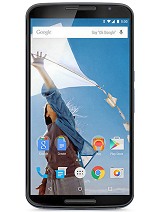
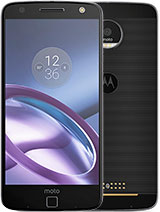
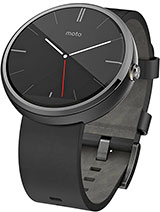















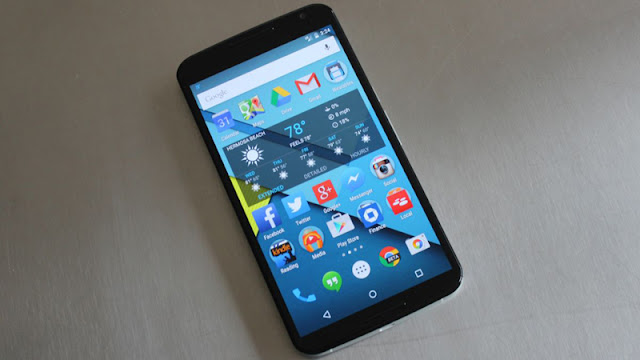


Comments
Post a Comment